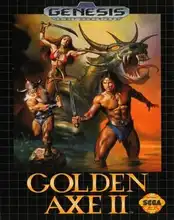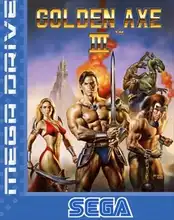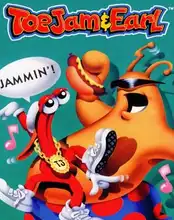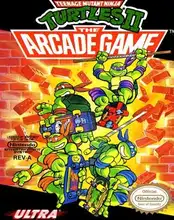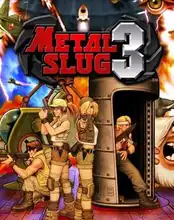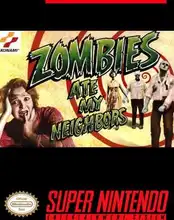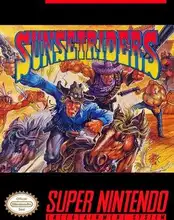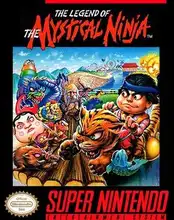Remember the feeling? Cramped on the couch, controller in hand, maybe a sibling or friend right beside you, yelling instructions (or accusations) at the screen? That, my friends, was the golden age of Co-op Multiplayer. Long before online lobbies and headset chatter, playing together meant being together.
For retro gamers, the appeal of classic multiplayer isn't just about the games themselves, but the shared experience. It was about teamwork, friendly rivalry, and the pure, unadulterated fun of navigating pixelated worlds side-by-side.
Why Retro Co-op Still Hits Different
Modern gaming offers incredible online experiences, but there's a unique magic to the old-school setup.
- Shared Screen, Shared Experience: No need for multiple TVs or online connections. Everyone sees the same action, leading to spontaneous reactions, strategy huddles, and immediate high-fives (or controller throws).
- Simpler Mechanics: Many retro co-op games focused on accessible gameplay loops – run, jump, shoot, punch. Easy to pick up, hard to put down.
- Built-in Nostalgia: These games are tied to specific memories and eras, making revisiting them with friends a powerful trip down memory lane.
Different Flavors of Playing Together
Retro multiplayer wasn't just one thing. You had:
- True Co-op: Working together towards a common goal, like clearing levels in a beat-em-up or solving puzzles.
- Competitive Multiplayer: Battling it out head-to-head (or in free-for-alls), often with scores or bragging rights on the line.
- Party Games: Designed for quick, chaotic fun with multiple players, often featuring mini-games.
While Co-op Multiplayer specifically refers to teamwork, the lines were often blurred, and many systems excelled at bringing friends together regardless of the exact mode.
Iconic Systems & Their Multiplayer Gems
Different consoles and platforms offered distinct multiplayer experiences.
The 16-bit Powerhouses (SNES, Sega Genesis)
This era perfected the side-scrolling beat-em-up and action-platformer co-op.
- SNES:
- Secret of Mana: A legendary action RPG allowing up to three players to adventure together.
- Contra III: The Alien Wars: Intense run-and-gun action requiring tight teamwork.
- Super Mario World 2: Yoshi's Island (Sort of): While not traditional co-op, some levels allowed for switching between Mario and Yoshi, offering a form of shared play. (Okay, maybe stretch, but the spirit was there!)
- Sega Genesis:
- Streets of Rage Series: Classic beat-em-ups perfect for two players cleaning up the streets.
- Contra: Hard Corps: Genesis's take on the intense Contra formula.
- ToeJam & Earl: A funky, exploration-focused co-op adventure.
The 3D Revolution (Nintendo 64, PlayStation)
As gaming went 3D, so did multiplayer, introducing splitscreen and arena battles.
- Nintendo 64:
- Mario Kart 64: The definitive splitscreen racer for many, sparking countless rivalries.
- GoldenEye 007: Revolutionary splitscreen FPS deathmatches.
- Mario Party Series: The quintessential party games, perfect for chaotic four-player fun.
- PlayStation:
- Crash Bash: Sony's answer to Mario Party, packed with competitive mini-games.
- Twisted Metal Series: Vehicular combat that was a blast in splitscreen.
- Bomberman World: The classic bomb-laying arena game, always a hit.
The Arcade & Beyond (MAME, Neo Geo, etc.)
Arcade cabinets were the original home of shared gaming, often featuring simultaneous play on a single screen.
- MAME (Arcade Emulation):
- Final Fight: Another iconic beat-em-up.
- Teenage Mutant Ninja Turtles: Turtles in Time: A beloved four-player brawler.
- Gauntlet: Fantasy hack-and-slash dungeon crawling for up to four.
- Dreamcast:
- Power Stone 2: A fantastic arena fighter allowing four players on a single dynamic screen.
Many of these arcade classics, and others like the challenging Metal Slug series (often found on Neo Geo and later ports), defined the single-screen Co-op Multiplayer experience.
Bringing Retro Co-op Back Today
The good news is, you don't need original hardware and a dusty CRT to relive these moments.
- Emulation: Software like SNES9x, RetroArch, MAME, and Project64 allow you to play ROMs on modern PCs, often with support for multiple controllers.
- Digital Stores: Services like GOG.com and Steam frequently release enhanced ports or collections of classic games, sometimes with modern online or local multiplayer options added.
- Archive.org: A treasure trove for historical software, including many old PC games that might have had early co-op modes (though often more complex to set up).
- Modern Collections/Consoles: Nintendo Switch Online, PlayStation Plus Premium, and various "mini" consoles often include classic games, sometimes with updated multiplayer features.
Setting up controllers might take a little tweaking depending on your chosen method, but the effort is absolutely worth it for the payoff of shared gaming joy.
The Lasting Magic of Playing Together
Retro Co-op Multiplayer wasn't just a feature; it was a social event. It forged friendships, sparked rivalries, and created indelible memories. While technology has changed how we connect, the simple pleasure of teaming up or facing off against a friend right there beside you remains timeless. So dust off those old controllers, fire up an emulator, or grab a modern port – the couch is waiting.
FAQ
Q: What's the difference between co-op and multiplayer? A: Multiplayer is a broad term for any game with more than one player. Co-op (cooperative) multiplayer specifically means players are working together towards a common goal, rather than competing against each other.
Q: How can I play these retro co-op games today? A: You can use emulators on a PC or other device, purchase digital re-releases or collections on platforms like GOG or Steam, or play them on modern consoles via online subscription services or dedicated mini-consoles.
Q: Were all retro multiplayer games splitscreen? A: No. Many arcade games and early console games used a single shared screen for all players. Splitscreen became more common as 3D graphics developed, especially for genres like racing and first-person shooters.
Q: What are some essential retro co-op games I should try? A: Great examples include Secret of Mana (SNES), Streets of Rage 2 (Genesis), Contra III (SNES), Teenage Mutant Ninja Turtles: Turtles in Time (Arcade/SNES), and Gauntlet (Arcade).

